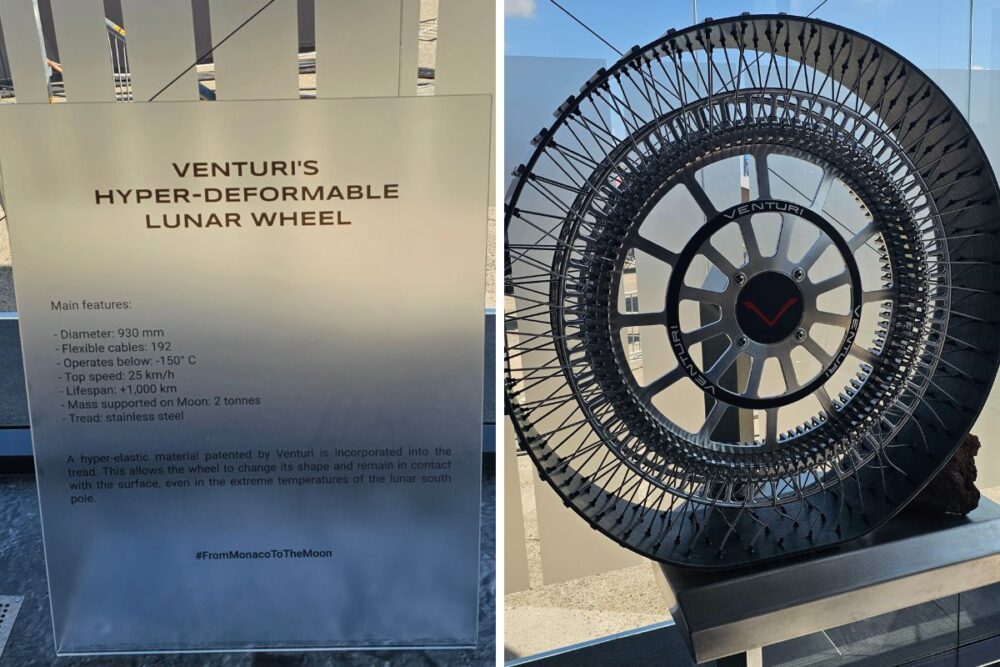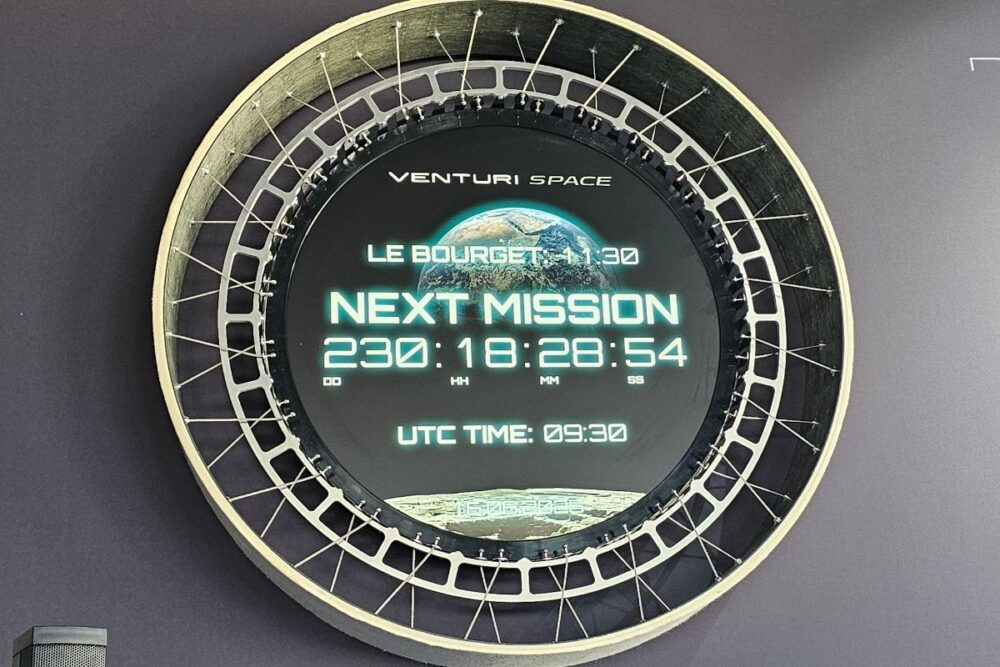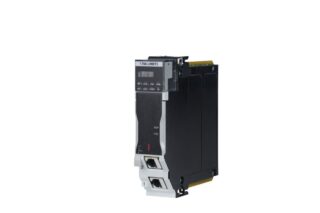At the 2025 Paris Air Show, Venturi Space unveiled MONA LUNA, an autonomous lunar rover designed in France and in Monaco to support Europe’s space ambitions. Its mission: to drive on the Moon by 2030 and survive its extreme night cycles. We spoke with Laurent Tricoche, Head of the Electronics and Software Division at Venturi Space.
A Rover Built for the European Space Effort
MONA LUNA is developed to meet the needs of ESA (European Space Agency) and CNES (French National Centre for Space Studies).
“The goal is clear: to be deployed at the Moon’s South Pole by 2030,” explains Laurent Tricoche, Head of the Electronics and Software Division at Venturi Space.
The Moon’s south pole is of great scientific interest because some of its craters are in permanent shadow, never receiving sunlight. This allows water ice and other volatile compounds to remain trapped and preserved. These eternally dark regions stay extremely cold, making them valuable sites for studying lunar resources and supporting future missions.
But any mission will first require a spacecraft capable of withstanding these extremely cold temperatures. Here comes MONA LUNA. The rover is engineered specifically for the Moon’s South Pole. It is equipped with robust systems to handle freezing temperatures in shadowed zones.
Engineering for the Extreme
The rover is designed to survive temperatures plummeting to -250°C in lunar craters. It features a solar-powered system, three high-performance batteries, an intelligent heating system, and a 14-day hibernation mode.
“During the lunar night, only critical electronics remain active to maintain temperature and transmit data,” notes Tricoche. “That hibernation capability is essential for system survival.”
The batteries, developed in Monaco, operate independently to allow full redundancy. Thermal management, heating systems, and heated wheels ensure resilience against extreme cold.
Hyper-Flexible Wheels
Mechanically, MONA LUNA is also a breakthrough. It features hyper-deformable wheels developed in Switzerland, capable of speeds up to 20 km/h on the lunar surface—an unprecedented feat for a lunar rover. These wheels are engineered for low gravity (1/6th of Earth’s), eliminating the need for traditional suspension systems.
“The rigid wheels used on Apollo missions are outdated,” Tricoche points out. “We need flexible wheels now—to absorb shocks and maintain stability.”
The rover can climb slopes of 20° with a maximum slip rate of 10%. Unlike other six-wheeled designs, MONA LUNA uses a simpler four-wheel configuration, reducing mechanical complexity while maximizing efficiency.

Autonomy as a Technological Edge
Venturi Space is betting big on autonomy. MONA LUNA will feature semi- to fully autonomous navigation, with remote control from Earth enhanced by onboard AI. This AI, developed in Toulouse and Switzerland, is designed to operate under extreme conditions and with low-latency communication.
“A core focus is autonomous navigation in hostile environments,” says Tricoche. “That’s the real technological differentiator compared to other rovers.”
The rover will also operate a robotic arm for handling scientific instruments, and it will carry sensors, spectrometers, and even drilling equipment. In future scenarios imagined by ESA, it could also rescue astronauts in distress.
READ ALSO
Strategic Autonomy for Europe’s Space Sector
MONA LUNA represents more than just a lunar rover—it embodies Europe’s ambition to achieve technological and strategic independence in space. The rover is entirely European. Its full lifecycle—from embedded electronics to avionics, communication, energy management, assembly, integration, and testing—will be managed from Toulouse.
This approach aims to reduce Europe’s reliance on global powers like the U.S. and China, and to position the continent as a leader in autonomous space mobility.
A Scientific and Industrial Platform
The rover’s first mission will be scientific in nature: to deploy sensors, spectrometers, and drilling tools for studying the lunar regolith. Venturi is partnering with research bodies such as IRAP (Research Institute in Astrophysics and Planetology) and specialists in lunar geology.
“There’s a huge demand from scientists who want to ‘break lunar rocks’ and study their composition. MONA LUNA is designed to offer them a mobile, reliable platform,” Tricoche adds.
While the first MONA LUNA mission is focused on science, commercial applications are already being considered. Venturi Space aims to develop a sustainable business model that will allow private actors to use the rover for payload delivery, lunar base logistics, and even resource extraction, such as helium-3.

A Roadmap Toward Mars
Though MONA LUNA is optimized for the Moon, its technologies are Mars-ready. Many engineers on the Toulouse team have worked on Martian missions, including projects around Phobos, Mars’s moon. The expertise in hardened electronics, battery systems, and complex system integration can be reused on future planetary missions.
“Right now, the Americans are mainly focused on Mars. That leaves a strategic window for Europe to establish a lasting presence on the Moon,” Tricoche explains. “This is our chance to demonstrate leadership. In France, there’s no other player focused on lunar rovers”
An Ambitious but Realistic Timeline
The rover will be transported by Ariane 6.4 and deployed on the Moon by the European Argonaut lander—both still under development. The project benefits from Venturi’s experience with the FLIP and FLEX rovers, set to launch with SpaceX in 2026.
“We’re positioning ourselves as the French leader and aim to become Europe’s go-to reference,” concludes Tricoche.
If all goes according to plan, the MONA LUNA mission could launch as early as 2029.
MONA LUNA Technical Specs
- Weight: 750 kg
- Top Speed: 20 km/h
- Power: Solar + 3 independent batteries
- Autonomy: Can survive 14 days of lunar night
- Features: Autonomous navigation, robotic arm, payload transport (scientific and logistical)
- Manufacturing: 100% European (France, Switzerland, Monaco)
Read our other stories from Paris Air Show





![Image [Buying Guide] How to Choose the Right Protection Gloves?](/wp-content/uploads/sites/3/Gloves-1-320x213.jpg)




